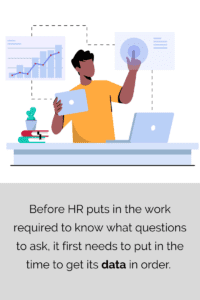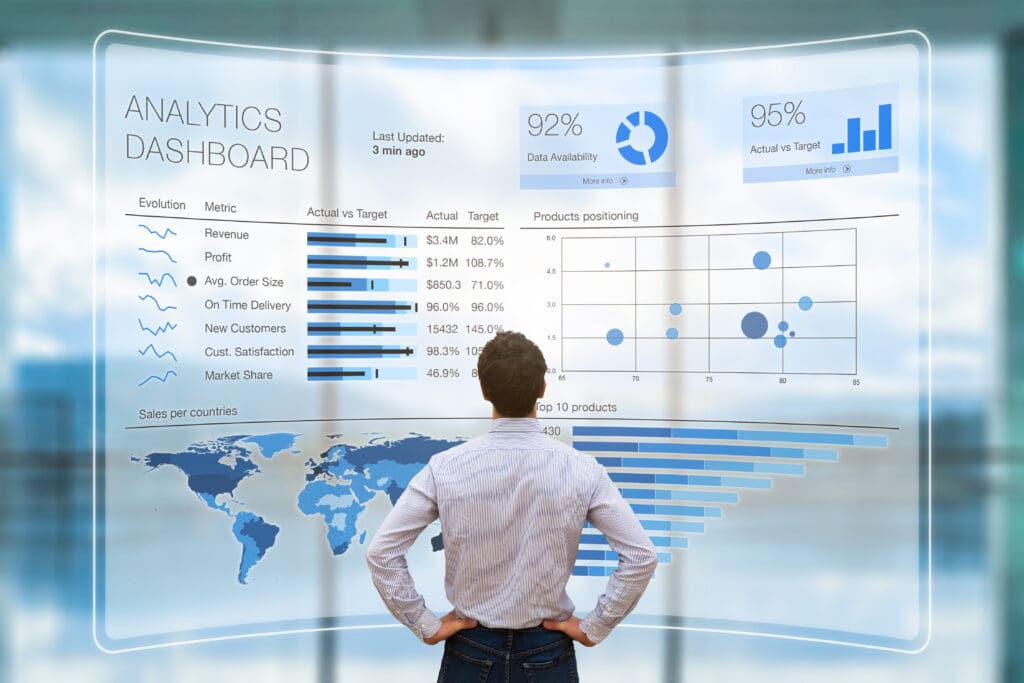Leaders are using accurate data to nip organisational problems in the bud.
By Simon Kent
Today, there are more tools at a business’ disposal to analyse employees’ behaviour, work, and all-round experience than ever before. And a recent ADP report, People at Work 2022: A Global Workforce View, takes a dive into data analysis around issues including worker mobility, pay and performance, worker confidence and job security. However, having this data is one thing; acting upon it is another.
“Managers often struggle to be objective,” says Sirsha Haldar, general manager, UK, Ireland, and South Africa at ADP. “It comes down to human nature. This means that good people can fall through the net, and vice versa.”
Data offers the additional security HR needs, says Halder. For example, if more than 70% of the workforce has contemplated making a major career move in the past year, it’s time to do something. “This insight is invaluable for businesses to make necessary changes in order to retain existing staff and save costs and valuable resources on recruiting,” he says.
“Just about all HR and business decisions should be data led,” agrees Chris Horton, director of HR consultancy LACE Partners. Unfortunately, senior leaders-both within HR and the wider business-have often formed an opinion before looking at all the information they have. “This is a risk,” he says, “especially when it comes to people. Often in asking the question and getting the underlying data, other issues are discovered and raised.”
Using data correctly might require asking the right questions in the beginning , but it also starts a journey to discovery. Horton believes the key lies in creating a hypothesis against which the data can be stacked. “The fundamental difference between good and bad data-based decisions is creating the hypothesis that proves or disproves some kind of insight,” explains Horton. “Right now, there are not enough organisations that believe in the value of data or they may but don’t have access to the broad data-literacy skill set to construct hypotheses that create the necessary insights, nor the technology to do what’s necessary.”
 When leveraged and analysed, data can provide insight into specific areas of an HR department’s concerns. For Forsta, a global provider of market research and customer and employee experience technology, data is used to ensure their own employee experience is positive.
When leveraged and analysed, data can provide insight into specific areas of an HR department’s concerns. For Forsta, a global provider of market research and customer and employee experience technology, data is used to ensure their own employee experience is positive.
“As a company focused on understanding an audience’s full experience and acting to improve it, we try to walk the talk as much as possible,” says Sara Cohen, the company’s chief people officer. “For example, we run quarterly employee net promoter score surveys. The most recent one we did was up 22 points from the previous year. That’s a solid shift and a good indicator of how we’re listening to the feedback that we receive from our employees and making sure that we’re prioritising our initiatives to address this.”
Whilst not every organisation will have advanced listening, tools at their disposal, Cohen believes pulse survey findings or Intranet analysis can be used to illustrate and examine trends. Janice Burns, chief people officer at Degreed, leverages data as a guide for the use of learning resources for the benefit of employees to enhance the skills at the disposal of the business.
“The key to knowing what to cut, where to pivot, and where resources should be allocated is understanding what learners need,” she says. “What skills does your organisation need to succeed in 2022 and where does this align with the aspirations of your people? You can answer this question and more by delving into your skill data.”
Burns also notes that taking a data-driven approach produces cost savings and productivity returns. She cites a Deloitte survey that found organisations taking a data-driven decision-making approach are twice as likely to have significantly exceeded business goals.
Taking a step away from pure company generated data, Colin Jacobs, managing director of social media consultancy Immediate Future, believes social media data now has a lot to offer employers who really want to understand their workforce. “Social analytics often surprises in the level of knowledge it can provide,” he says. “All social media activity leaves tell-tale trails of information through snippets of code called pixels, that can be gathered to produce deep insights.” Pixels, says Jacobs, make it possible to track posts and conversation content using more than 40 million attributes.
“It can tell you what employees think of a company, colleagues, and managers, the products or services being sold, what staff want from their job, from their careers, their job highlights and frustrations, and what they expect in the future,” he says. “It can tell all of these things and more, including whether they want to move on to somewhere else, change roles, obtain a promotion, receive more training, and what lies behind their motivations.”
Getting data-led decision-making right means getting the data right first. Before HR puts in the work required to know what questions to ask, it first needs to put in the time to get its data in order. Data needs to be cleaned, processed, and stored appropriately if the analysis is to produce any meaningful results. “It’s worth focusing on creating an intelligent, integrated ecosystem that can access and enrich the data coming from different sources,” says Burns.
She explains the right data means creating a single source of truth for an organisation’s skill ‘health,’ but the same source of truth can be secured for other areas of HR, corresponding with the data under scrutiny. Certainly, realising this requires some upfront work to collect and prepare the data, but at the end of the day, businesses will be set to reap the benefits as they can make incisive and confident decisions about the way they manage their people.














